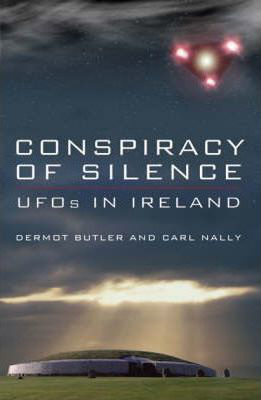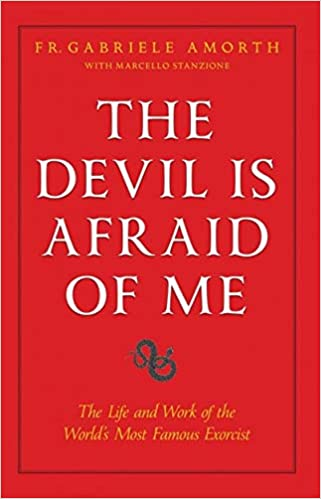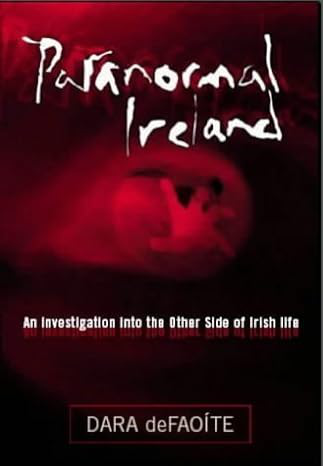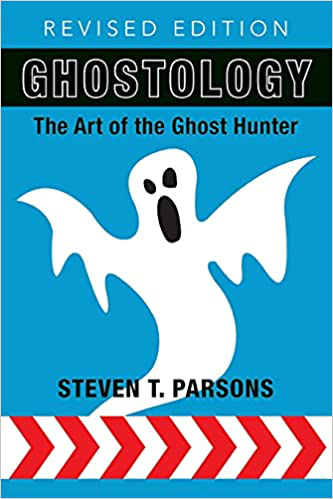Lights Out: The Pros and Cons of Ghost Hunting at Night
Ghost/Paranormal
Today (7 hours ago)
5 minute read.
Reportedly haunted locations are often investigated during the night, but the reasons for this are more practical than supernatural. While popular media may portray ghost hunting as a nocturnal activity steeped in ritual, there are logical and methodological explanations for this preference.
Reduced External Noise and Interference
Night-time offers a quieter environment, especially in urban or semi-urban areas. During the day, human activity such as traffic, construction, and general footfall can introduce noise pollution that interferes with audio equipment used in investigations. According to paranormal researcher Richard Felix, "You need as little external noise as possible to properly assess what's happening around you. That’s just not possible at 2pm on a busy high street".
Controlled Lighting Conditions
Darkness allows investigators to control the lighting conditions more precisely. Many pieces of equipment used in ghost hunting, such as infrared cameras, full spectrum cameras, and EMF meters, function more effectively or reveal more details in low light. Artificial lighting can obscure or wash out visual anomalies that these devices are trying to detect.
Psychological Impact
The psychological state of participants is often heightened in the dark, which can lead to a more focused and cautious approach during investigations. While this may increase the risk of false positives due to heightened fear responses, it can also sharpen observational skills.
Steve Parsons of the Association for the Scientific Study of Anomalous Phenomena notes, “Darkness doesn't make a place more haunted, but it does make people more attentive. That can work in favour of serious researchers who know how to separate emotional reactions from genuine anomalies”.
Scheduling and Access
Many historical or allegedly haunted sites are active businesses or private residences during the day. Access is typically only granted after closing hours, which naturally means investigations begin at night. Moreover, less human traffic ensures better control over the environment and a reduced chance of contamination from non-paranormal sources.
In one instance, a team investigating a reputedly haunted inn in Somerset was only allowed on the premises between 10pm and 4am. “We had a six-hour window where we could monitor the space without guests, staff, or delivery vehicles disturbing our equipment”, said team lead Rachel Cook.
Use of Specific Technology
Certain investigative tools are more effective in low-light conditions. For example, thermal imaging cameras are used to detect heat patterns that might indicate the presence of a living being or unexplained temperature fluctuations. Thermal imaging cameras generally perform better at night due to the lower ambient temperatures, which create a higher contrast between warm objects and their surroundings.
Despite its advantages, working in darkness presents several challenges that can impact the reliability and safety of paranormal investigations.
Increased Risk of Accidents
Low visibility significantly increases the likelihood of physical accidents. Tripping hazards, uneven flooring, and unseen obstacles pose safety risks in unfamiliar or historic buildings. Many such locations have restricted lighting, and without careful planning, investigators can be injured. Some teams mitigate this by using torches or headlamps, though this may interfere with certain light-sensitive equipment.
Heightened Suggestibility
Dark environments can amplify fear, anxiety, and suggestibility among investigators. Shadows, distant noises, and cold drafts may be misinterpreted as paranormal phenomena. According to Dr Ciarán O’Keeffe, a psychologist and parapsychologist, “Our brains are wired to recognise patterns, especially in the dark. That makes us more prone to seeing faces in shadows or hearing voices in static, it's known as pareidolia”.
Limited Evidence Quality
Photographs and video recordings taken in darkness are often of lower quality. Grainy images, light reflections, and lens flares can create misleading results. Similarly, audio recordings may pick up interference from equipment or environmental sounds not easily identified in real-time.
Fatigue and Cognitive Impairment
Investigations conducted during late hours can lead to fatigue, reducing alertness and decision-making ability. Tired investigators may be less thorough, more distracted, or more likely to jump to conclusions. Prolonged sessions into the early morning hours can also compromise the accuracy of note-taking and data analysis.
Cultural Expectations
Public expectation also plays a role. Paranormal events are traditionally associated with the night, particularly the hours between midnight and 3am, sometimes referred to as the “witching hour”. While there is no empirical evidence that paranormal activity increases at this time, public perception continues to influence when investigations are conducted.
“It’s as much about managing expectations as it is about methodology”, said historian and paranormal tour guide James Horne. “People believe ghosts come out at night, so that's when we look for them.”
While conducting paranormal investigations at night has practical benefits - such as reduced noise, better access, and controlled conditions - it also introduces safety risks, psychological biases, and technical limitations. For those approaching the subject seriously, understanding both the strengths and weaknesses of night-time investigation is key to collecting reliable evidence and ensuring the safety of all participants.
Reduced External Noise and Interference
Night-time offers a quieter environment, especially in urban or semi-urban areas. During the day, human activity such as traffic, construction, and general footfall can introduce noise pollution that interferes with audio equipment used in investigations. According to paranormal researcher Richard Felix, "You need as little external noise as possible to properly assess what's happening around you. That’s just not possible at 2pm on a busy high street".
Controlled Lighting Conditions
Darkness allows investigators to control the lighting conditions more precisely. Many pieces of equipment used in ghost hunting, such as infrared cameras, full spectrum cameras, and EMF meters, function more effectively or reveal more details in low light. Artificial lighting can obscure or wash out visual anomalies that these devices are trying to detect.
Psychological Impact
The psychological state of participants is often heightened in the dark, which can lead to a more focused and cautious approach during investigations. While this may increase the risk of false positives due to heightened fear responses, it can also sharpen observational skills.
Steve Parsons of the Association for the Scientific Study of Anomalous Phenomena notes, “Darkness doesn't make a place more haunted, but it does make people more attentive. That can work in favour of serious researchers who know how to separate emotional reactions from genuine anomalies”.
Scheduling and Access
Many historical or allegedly haunted sites are active businesses or private residences during the day. Access is typically only granted after closing hours, which naturally means investigations begin at night. Moreover, less human traffic ensures better control over the environment and a reduced chance of contamination from non-paranormal sources.
In one instance, a team investigating a reputedly haunted inn in Somerset was only allowed on the premises between 10pm and 4am. “We had a six-hour window where we could monitor the space without guests, staff, or delivery vehicles disturbing our equipment”, said team lead Rachel Cook.
Use of Specific Technology
Certain investigative tools are more effective in low-light conditions. For example, thermal imaging cameras are used to detect heat patterns that might indicate the presence of a living being or unexplained temperature fluctuations. Thermal imaging cameras generally perform better at night due to the lower ambient temperatures, which create a higher contrast between warm objects and their surroundings.
Despite its advantages, working in darkness presents several challenges that can impact the reliability and safety of paranormal investigations.
Increased Risk of Accidents
Low visibility significantly increases the likelihood of physical accidents. Tripping hazards, uneven flooring, and unseen obstacles pose safety risks in unfamiliar or historic buildings. Many such locations have restricted lighting, and without careful planning, investigators can be injured. Some teams mitigate this by using torches or headlamps, though this may interfere with certain light-sensitive equipment.
Heightened Suggestibility
Dark environments can amplify fear, anxiety, and suggestibility among investigators. Shadows, distant noises, and cold drafts may be misinterpreted as paranormal phenomena. According to Dr Ciarán O’Keeffe, a psychologist and parapsychologist, “Our brains are wired to recognise patterns, especially in the dark. That makes us more prone to seeing faces in shadows or hearing voices in static, it's known as pareidolia”.
Limited Evidence Quality
Photographs and video recordings taken in darkness are often of lower quality. Grainy images, light reflections, and lens flares can create misleading results. Similarly, audio recordings may pick up interference from equipment or environmental sounds not easily identified in real-time.
Fatigue and Cognitive Impairment
Investigations conducted during late hours can lead to fatigue, reducing alertness and decision-making ability. Tired investigators may be less thorough, more distracted, or more likely to jump to conclusions. Prolonged sessions into the early morning hours can also compromise the accuracy of note-taking and data analysis.
Cultural Expectations
Public expectation also plays a role. Paranormal events are traditionally associated with the night, particularly the hours between midnight and 3am, sometimes referred to as the “witching hour”. While there is no empirical evidence that paranormal activity increases at this time, public perception continues to influence when investigations are conducted.
“It’s as much about managing expectations as it is about methodology”, said historian and paranormal tour guide James Horne. “People believe ghosts come out at night, so that's when we look for them.”
While conducting paranormal investigations at night has practical benefits - such as reduced noise, better access, and controlled conditions - it also introduces safety risks, psychological biases, and technical limitations. For those approaching the subject seriously, understanding both the strengths and weaknesses of night-time investigation is key to collecting reliable evidence and ensuring the safety of all participants.



